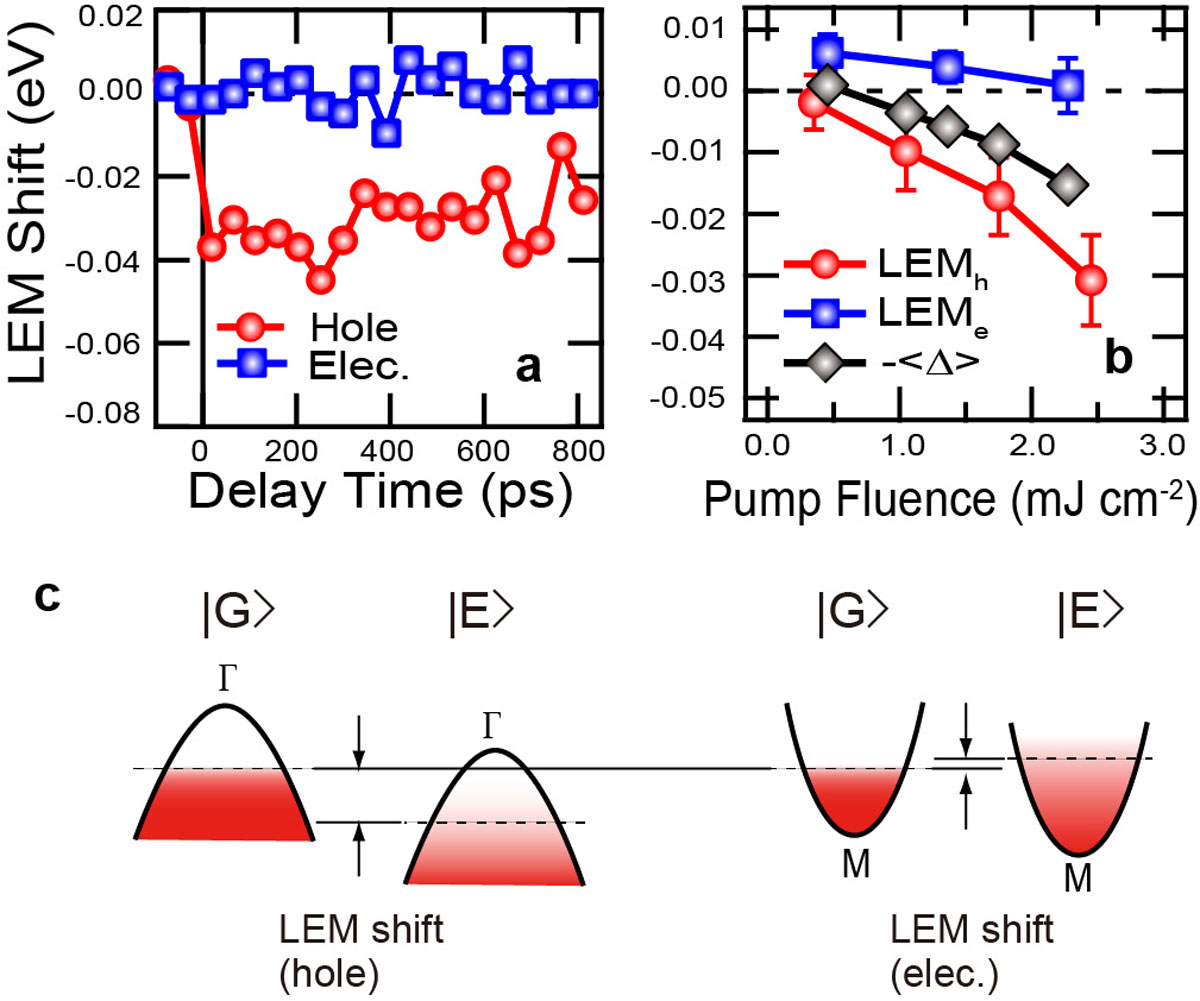Photoinduced Possible Superconducting State with Long-Lived Disproportionate Band Filling in FeSe
Okazaki Group
Photoexcitation is a very powerful way to instantaneously drive a material into a novel quantum state without any fabrication, and variable ultrafast techniques have been developed to observe how electron, lattice, and spin degrees of freedom change. One of the most spectacular phenomena is photoinduced superconductivity, and it has been suggested in cuprates that the transition temperature Tc can be enhanced from the original Tc with significant lattice modulations.
Here, we demonstrate the possibility for another photoinduced high-Tc superconducting state in the iron-based superconductor FeSe using time- and angle-resolved photoemission spectroscopy (TARPES) [1]. We find that a photo-induced superconducting gap appears as a result of significant lattice modulation. Our demonstration of how we can change electron- as well as lattice-structure in FeSe by strong photo-excitation provides important insight into the next-generation devices using photo-induced superconductors, e.g. ultrafast switches or quantum engineering.
Figures 1a and 1b show the time-dependent oscillatory components of the photoemission intensity integrated above the Fermi level (EF) after photo-excitation for the hole and electron Fermi surfaces (FSs), respectively. The fits by sinusoidal functions are shown as black solid lines. The clear appearance of single cosine-like signature is noticed both for the hole and electron FSs. The frequency of this oscillation is 5.3 THz, which corresponds to the A1g coherent phonon mode shown in Fig. 1c. Moreover, the amplitude of the oscillation significantly increases with the increase of pump fluence shown in Fig. 1d. These signatures indicate that the observed coherent phonons is explained by the displacive excitation mechanism, in which coherent phonons are generated as a result of the photo-induced modulation of the lattice structure.

Fig. 1. a, b. Oscillatory components for the time-dependent photoemission intensities integrated above Fermi Energy for the hole and electron Fermi surfaces. c. Illustration of lattice modulation by photoexcitation, corresponding to A1g phonon mode. d. Fast Fourier transform (FFT) amplitude at 5.3 THz for the hole and electron FSs as a function of the pump fluence.
In order to study the photo-induced electronic state in more detail, we further conducted long time-scale measurements. Figures 2a and 2b show the photo-induced leading-edge midpoint (LEM) shifts for the electron and holes FSs as a function of time and pump fluence, respectively. One can notice that the LEM shift at the hole FS is negative, while the LEM shift at the electron FS is negligibly small. This unbalanced shift is due to disproportionate band filling schematically shown in Fig. 2c. It is of note that the disproportionate band filling lasts for a quite long time of ~1ns owing to the indirect semimetallic band structure, where the electron-hole recombination must accompany the assistance of phonons with a large momentum.

Fig. 2. a, b. Shifts of the leading-edge midpoints (LEM) as a function of time and pump fluence for the hole and electron FSs. In Fig. 2b, the averaged superconducting gap, <∆> is shown as black solid lines and markers. c. Illustration of photoinduced LEM shifts for the hole (Г) and electron (M) bands. |G> and |E> represent the ground and photoexcited states, respectively.
The origin of the disproportionate band filling is most likely ascribed to the emergence of photo-induced superconducting gap because FeSe has no other competing orders such as the anti-ferromagnetic order in the equilibrium state. To further investigate the photo-induced superconducting gap, we extract the superconducting gap and performed photo-intensity dependent measurements, as shown in Fig. 2b. We find that with increasing photo intensity, the superconducting gap also increases, which suggests that the enhancement of superconducting order is enabled by tuning light intensity.
In summary, our finding of the possible photo-induced superconducting state for FeSe can provide another platform of photo-induced superconductivity. The significant property in this system is the longevity of the photo-induced state, which is also called metastable. According to the report in photo-induced superconducting state in cuprates, the carrier lifetime of FeSe is more than two orders of magnitude longer than that of cuprates. In terms of device applications, this signature is quite powerful because one can perform multiple and complicated processes during this metastable state.
References
- [1] T. Suzuki, T. Someya, T. Hashimoto, S. Michimae, M. Watanabe, M. Fujiwara, T. Kanai, N. Ishii, J. Itatani, S. Kasahara, Y. Matsuda, T. Shibauchi, K. Okazaki, and S. Shin, Communications Physics, 2, 115 (2019).
